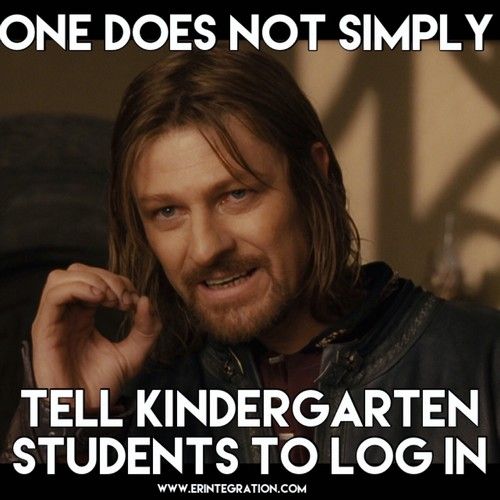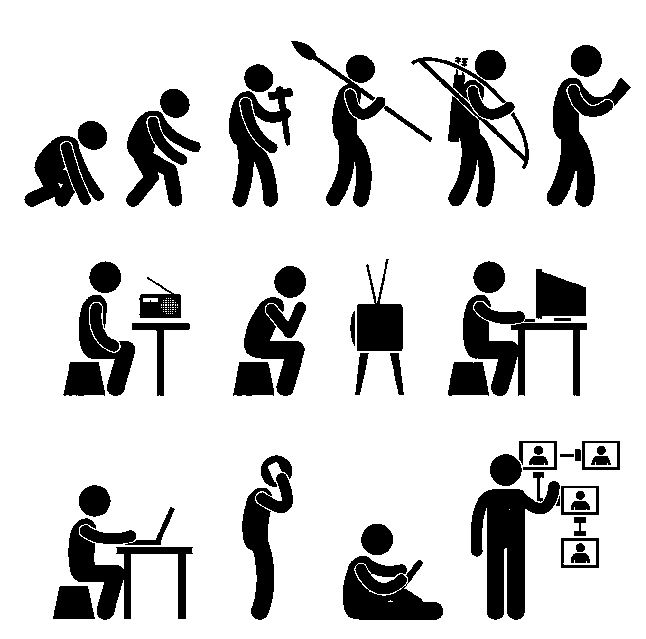Category Archives: EC&I 830
The Teeter Totter Effect- Social Media & Childhood
Is social media ruining childhood? Or is it us?
You have died of dysentery…
Ed Tech- In with the good or is it out with the bad?
The first week debate was truly a battle. I’ll be the first to say I was in favour of the debate topic- Technology in the classroom enhances learning. How far our classrooms have come, and how quickly we can access and share information, truly has revolutionized our way of teaching.
Out of the gate, Will and Mike were able to bring some strong arguments for the enhancements technology brings to the classroom. The copious amount of tech tools they shared in their opening statement video barely scratches the surface on what is out there and the benefits they have for students. As Ed Tech further advances into everyday classroom practice and programs continue to evolve, the benefits that they give teachers is incredible. Instant feedback on tests, less papers to be spilt on, the engagement fun factor can’t be duplicated. Class, Take Out Your Tablets: The Impact of Technology on Learning and Teaching in Canada was a insightful read. It reminds us that we are building 21st century learners in our classrooms and that the skills they learn now with tech, may only be stepping stones into their future occupations.

Pg. 7 Information and Communications Technology Council (ICTC) article
I find this question very hard to argue with. The fact is our students will be working in jobs and using tech that may not even be invented yet or as the article states, ” Most educators believed that technology would continue to grow in importance for different careers, including ones that have not traditionally required it” (Pg. 8).
On the other hand, Catrina and Janeen made strong counterpoints  against the argument. In the below video, Mary Jo Madda presents an all to common story in education, jumping on trends that have big financial implications. In this case, the Los Angeles Unified School District spent $1 Billion Dollars on an initiative to put an iPad in the hands of every student. What did they find? Well, first of all they didn’t consult the people who would be leading this initiative (the teachers), which with any large financial expenditures surely you would think you’d lay a little more groundwork with some feedback. Let’s say that’s strike 1. The 2nd strike, not providing those very same teachers with the professional development and training on how to use this new technology. We’ve all been there, here’s a new idea, app, device (think smartboards back in the day) and try to figure out how to teach with it properly or is it just used a novelty item to throw bean bags at with math games. The 3rd strike then was the end result, students not learning to their full potential.
against the argument. In the below video, Mary Jo Madda presents an all to common story in education, jumping on trends that have big financial implications. In this case, the Los Angeles Unified School District spent $1 Billion Dollars on an initiative to put an iPad in the hands of every student. What did they find? Well, first of all they didn’t consult the people who would be leading this initiative (the teachers), which with any large financial expenditures surely you would think you’d lay a little more groundwork with some feedback. Let’s say that’s strike 1. The 2nd strike, not providing those very same teachers with the professional development and training on how to use this new technology. We’ve all been there, here’s a new idea, app, device (think smartboards back in the day) and try to figure out how to teach with it properly or is it just used a novelty item to throw bean bags at with math games. The 3rd strike then was the end result, students not learning to their full potential.
The heart of the issue with incorporating too much tech, is the loss of the role of the teacher. Teachers play a far bigger role than showing cool apps or providing a multitude of toolsets for their classrooms. Technology DOES enhance learning in the classroom, the big issue is how is enhancing that learning. With all of the new websites, and innovations happening with AI, technology isn’t going anywhere and I don’t think you would find anyone who would argue that. It does however need to be carefully examined how it is being used as a tool in the classroom, because it will never be able to replace the interactions students have with one another, or relationships formed between classmates and educational staff.
Now I can honestly say, my vote did move more to the middle ground of the debate. Do I see some flaws with using technology in the classroom, of course. The distractions, hours spent learning new media or programs, only to find out they don’t serve any benefit to my students. Is there a lot of good? Of course! New found ways to assess students through Mentimeters, Kahoots, or Flip responses, have allowed my students some real lightbulb moments where traditional pen and paper have only left frustration. Teaching drafting and designing through CAD software was game changing. Having students be able to visit virtual art galleries around the world, have inspiration at the click of a few buttons provided ample inspiration for many visual art assignments. The Google suite software has streamlined most of my classes, even PE! Would I go back to 14 years ago and barely any tech in my classroom, no way. Is it a struggle to find the perfect balance of tech in the classroom, I would say that’s probably more the issue. What tech or programs were you ever tossed your way only to find out they were never going to work in your class?

Check in next week where we will be discussing if Social Media Is Ruining Childhood.
Teachers Enhance Learning, Technology Can Help
Is Technology Advancing Learning or is it just a Great Addition?
Prior to our first debate I had voted that technology does in fact help to advance learning in the classroom. However, my post vote had changed and I think Catrina & Janeen did an excellent job of influencing me to the other side. I have always been a little skeptical with technology, but have done by best to appreciate all that it is capable of while trying to incorporate it into my classroom. I have come to the conclusion (at this point in my life/career) that as much as I still appreciate technology, I truthfully don’t think it helps to ‘advance learning’. Sure it is helpful & handy in many diverse ways, but is it in fact advancing student learning?

In the article, “Class, Take Out Your Tablets: The Impact of Technology on Learning and Teaching in Canada” that was shared by Will & Michael, it mentions how technology has positively impacted the workload of the teacher. The article shares how it gives us educators more of an opportunity to focus on building relationships & inspiring students, because technology has helped to ease some of our late night marking and lesson plan preparation. This feels like something I have taken for granted, because it’s all I know as an educator. It is so nice to log onto my Planbook when I am sick & unable to go into work. Technology has provided me with a way to prepare my day from the comfort of my bed.
Even though this article made some valid points, I think I’m still convinced that technology is not yet advancing our student’s learning. As Catrina stated in the presentation, “Technology doesn’t necessarily mean engagement”, along with Janeen stating that, “Technology doesn’t necessarily mean collaboration”. These statements really opened my eyes to the reality of it. Are my students anymore engaged when they are working online or incorporating technology? Are they using collaboration in a creative way to engage in new conversation? I don’t think so. I think technology is just a helpful tool that both the student & the teacher can gain benefits from, but not necessarily advancing the learning.
I will still continue to embrace & incorporate technology, because there are still many incredible benefits of it despite disagreeing that it advances learning within the classroom. I hope one day I can find a way for it to become an advancement of learning & not just a tool of something that makes our lives “easier”.